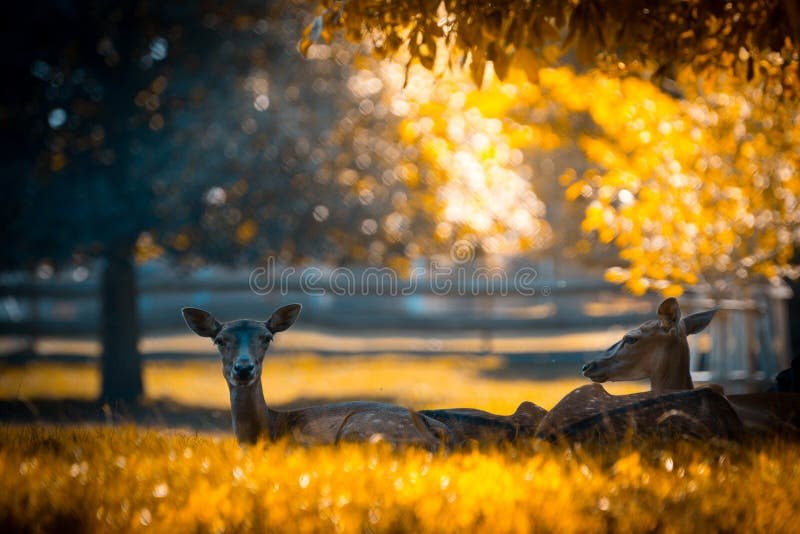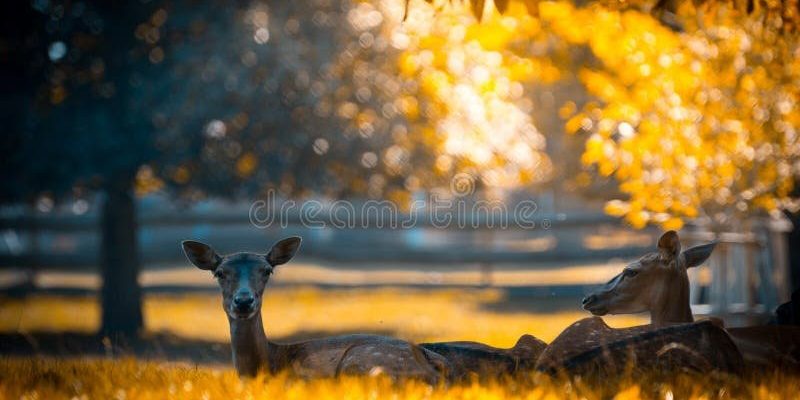
Imagine trying to find food in a snow-covered landscape or keeping warm when temperatures drop. For deer, it’s all about adaptation and instinct. Equipped with natural instincts and remarkable physical traits, deer are like nature’s athletes, fine-tuned to navigate the challenges of seasonal changes. Let’s dive into the ways these remarkable animals endure and adapt to tough environments.
Physical Adaptations: Nature’s Design
Deer are built to withstand a range of weather conditions. Their thick fur is among the first lines of defense against cold temperatures. In the winter, deer grow a denser undercoat, trapping air and providing insulation similar to how a warm blanket keeps you cozy on a chilly night. If you’ve ever touched a down jacket, you know how warmth can be trapped, and that’s exactly how their fur works.
But it’s not just their fur that keeps them warm. Deer have a layer of fat beneath their skin, which becomes particularly vital in winter months. This fat acts as an energy reserve, giving them the fuel they need when food is scarce. Think of it like saving your favorite snacks for a rainy day—you might not want to eat them all at once, but they’re there when you really need them.
Their hooves also play an essential role. The hard edges and cloven structure of deer hooves allow them to move easily across snow and rough terrain. This unique design helps them dig through snow to reach grass or other vegetation, while also providing traction in slippery conditions. Imagine trying to walk in snow without the right shoes—deer have naturally evolved the perfect footwear for their environment.
Feeding Strategies: Finding Food in Adversity
Finding food can be a challenge for deer, especially during harsh winters or droughts. But deer are clever foragers. They adapt their diets based on what’s available. In summer, they feast on tender leaves, fruits, and nuts. But as winter arrives, they switch to harder foods like bark, twigs, and even dried grasses.
One important thing to note is their ruminant stomach, a remarkable organ that helps deer extract nutrients from tough plant material. It works kind of like a multi-compartment food processor. When deer eat, they chew their food just enough to swallow it, then later regurgitate it to chew it again. This process, called rumination, ensures they get the maximum nutrients from their food, which is crucial when resources are low.
Deer are also known to form social groups, especially in winter. By staying in groups, they can share information about the best food sources. It’s almost like a social network for them—when one deer finds food, others will likely follow. It’s a powerful survival strategy that highlights the importance of community even in the animal kingdom.
Behavioral Adaptations: Smarts Over Size
When it comes to survival, behavior often trumps size. Deer have developed some interesting strategies to cope with harsh conditions. For example, they change their activity patterns based on the season. In winter, when food is scarce, deer may become more active during the warmer parts of the day to conserve energy and minimize exposure to the cold.
You might be wondering how they avoid predators, especially when they are more vulnerable due to bad weather. Deer have excellent senses. Their keen eyesight allows them to spot movement from a distance, while their acute hearing helps them detect sounds that might signal danger. They are also surprisingly good at remaining still when they sense a threat. If you’ve ever tried to catch a deer off guard, you know how challenging it can be!
Moreover, during harsh weather, deer will often seek shelter in dense thickets or areas with tall trees where they can hide from predators and block harsh winds. This instinctual behavior helps them stay safe while conserving energy. Thinking ahead and finding safe spots is as crucial for deer as it is for us choosing a sheltered spot during a storm.
Seasonal Migration: A Strategic Move
While not all deer migrate, many species do undertake seasonal movements to escape the worst of winter’s chill. For example, some deer will move to lower elevations where snow is less likely to accumulate. This strategy allows them to access more food and reduces the energy they expend trudging through deep snow.
Migration can be quite a journey. Some deer travel many miles between their summer and winter territories. This movement isn’t just instinctive; it’s a learned behavior passed down through generations. Young deer often follow the paths established by older, more experienced deer. It’s similar to learning a route from a family member; they know the way and the best spots to stop along the journey.
In urban areas, deer might not migrate as extensively. Instead, they adapt to their surroundings, using parks and woodlands as foraging grounds. This flexibility is essential for survival in a world increasingly influenced by human development.
Impact of Climate Change: New Challenges
As we discuss how deer survive, it’s important to touch on the shifts brought about by climate change. Changing weather patterns can affect food availability and migratory routes. Warmer winters might lead to earlier budding of plants, which can throw off the timing for deer that rely on seasonal cycles.
Additionally, increased human activity and land development can limit deer habitats. When their traditional feeding grounds are altered or destroyed, deer may find themselves moving into urban areas, which can lead to increased encounters with vehicles and humans. This shift can create new challenges for deer and humans alike.
Understanding these impacts is essential for wildlife management and conservation efforts. By recognizing the struggles deer face, we can help protect their habitats and ensure these remarkable animals continue to thrive, even in changing environments.
In the grand tapestry of nature, deer showcase incredible resilience. From their physical adaptations to their clever behaviors, these animals are master survivors in harsh environments. Whether it’s enduring freezing temperatures or finding food in scarce conditions, deer remind us of the power of adaptation and community.
As we move forward, appreciating the complexity of their lives can deepen our respect for wildlife. Just like us, deer face challenges, but with instinctive wisdom and teamwork, they continue to flourish. Next time you spot one of these beautiful creatures, take a moment to wonder about the hardships they overcome to thrive in their ever-changing world.

